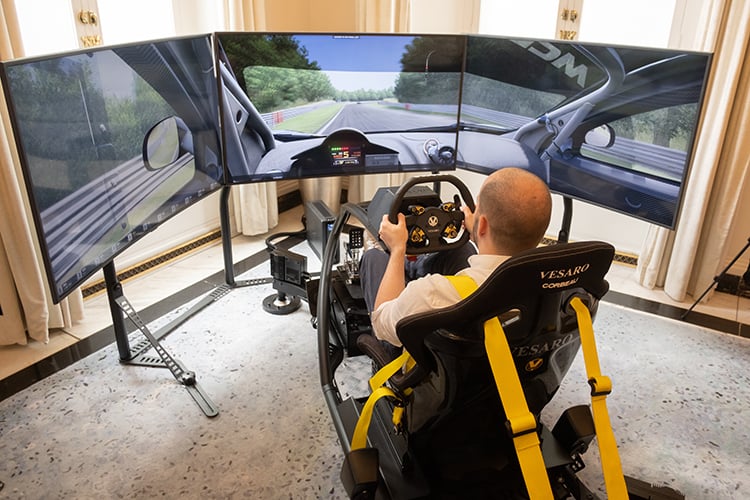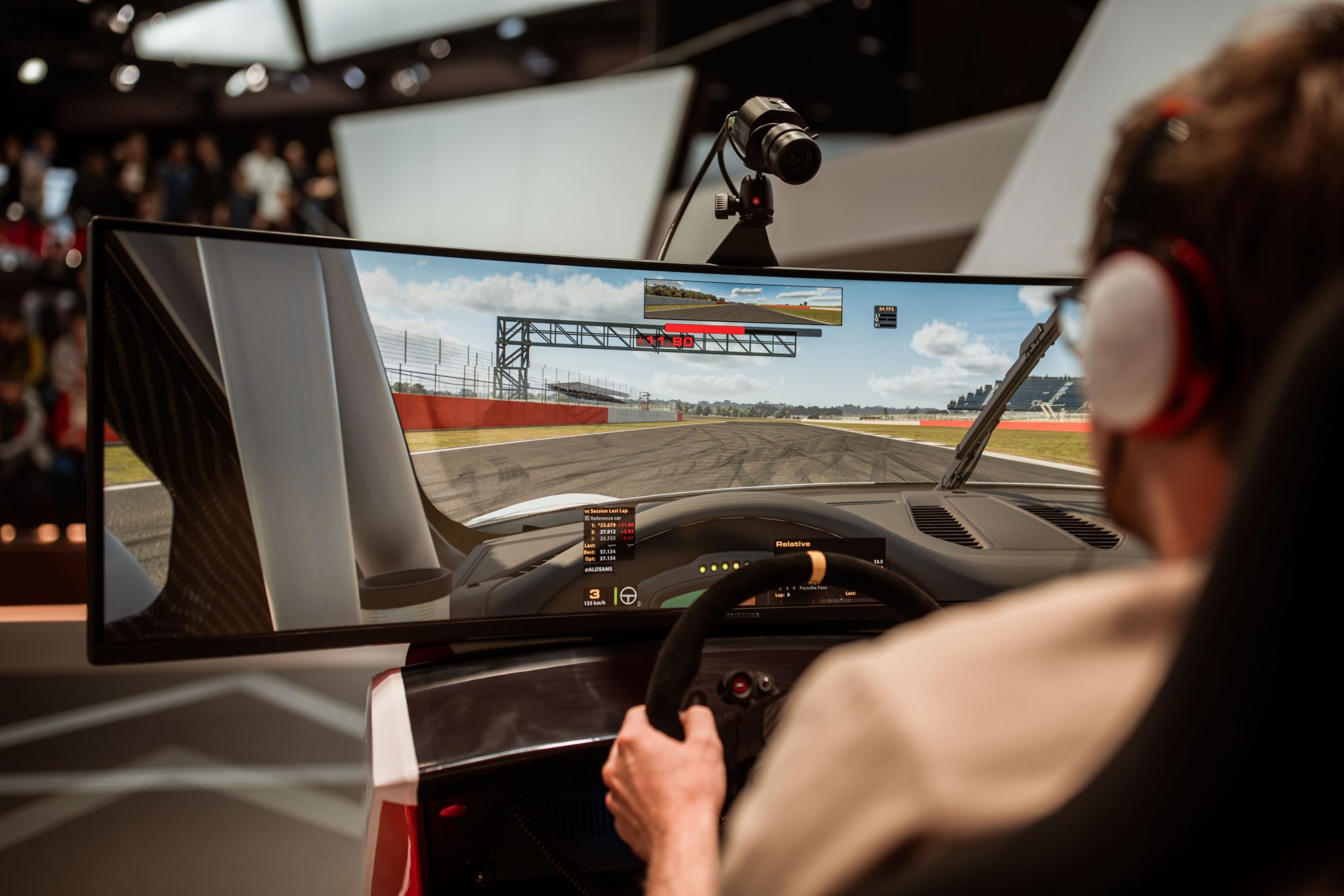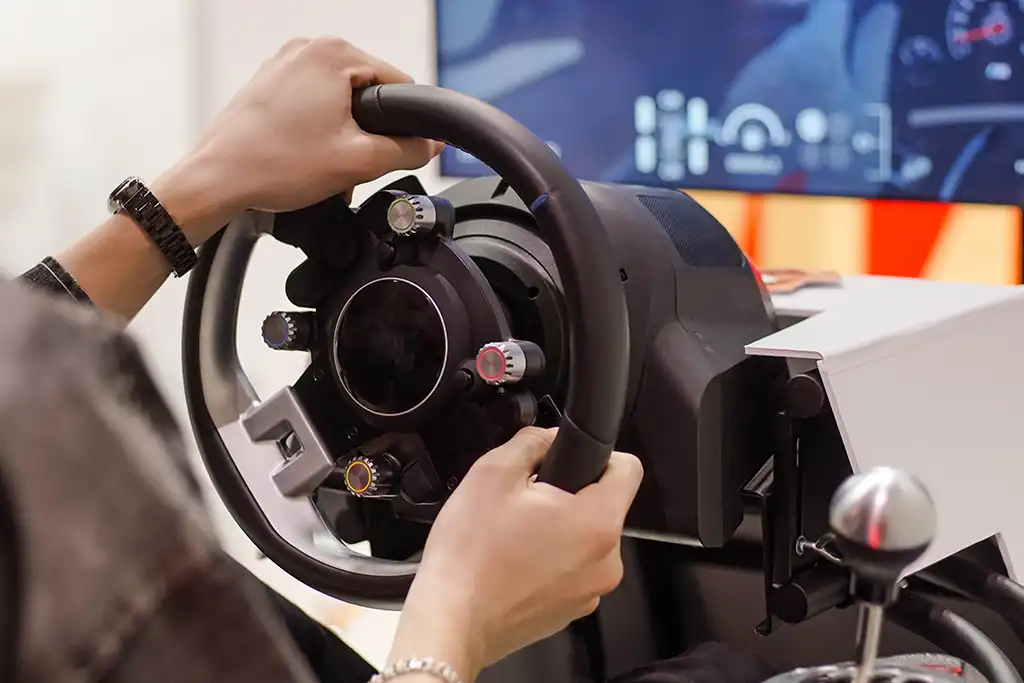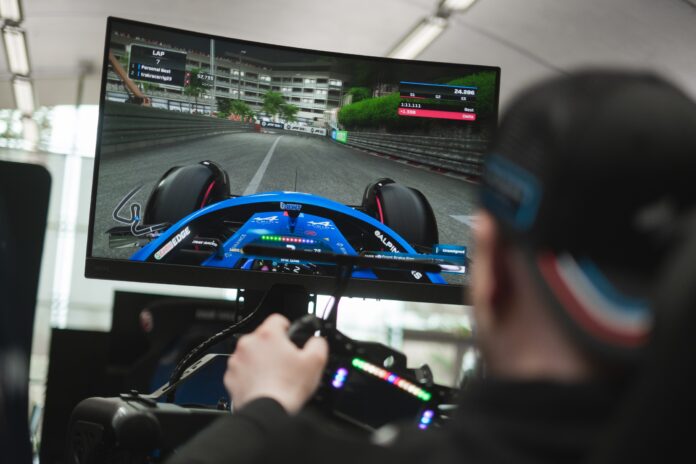Sim racing has grown tremendously in popularity, offering racing enthusiasts an immersive experience from the comfort of their homes.
However, improving your skills in sim racing doesn’t mean you need to spend a lot of money on high-end gear or professional setups. Here are practical tips to help you get better at sim racing without breaking the bank.
Focus on Fundamentals

The first step to improving in sim racing is mastering the fundamentals. You don’t need expensive gear to understand the core principles of racing, such as racing lines, braking points, and throttle control.
Many of these concepts can be practiced effectively with basic equipment, including a standard gaming wheel and pedals. Start by selecting one track and one car to familiarize yourself with their dynamics and physics.
Practicing consistently on the same track will help you understand the intricacies of the course and how different factors affect your lap times.
A key resource for gaining foundational knowledge is the learn sim racing course offered online. This course is designed to teach you the basics of sim racing without overwhelming you with unnecessary complexities.
By focusing on your technique and understanding the mechanics of racing, you can make significant progress without upgrading your equipment.
The information and guidance provided will help you make more informed decisions on the track and develop the skills needed to be competitive.
Choosing the Right Equipment
While it’s tempting to buy the latest and greatest gear, you can improve your sim racing skills with basic equipment.
A mid-range steering wheel and pedal set is sufficient for most beginners. Look for gear that offers force feedback, which will give you a better feel for the car’s behavior on the track.
A good example of a budget-friendly option is the Logitech G29 or Thrustmaster T150. These provide a realistic driving experience without costing a fortune.
A sturdy and comfortable chair is also important. While you don’t need a dedicated racing seat, find a chair that provides good support for long racing sessions.
Ensure your setup allows you to reach your pedals and wheel comfortably, with your arms bent at a slight angle.
Proper ergonomics can prevent fatigue and help maintain consistency in your performance. As you progress, consider small upgrades like adding a shifter or handbrake to your setup, but only if they fit within your budget.
Optimize Your Software Settings

Getting better at sim racing also involves optimizing your software settings. Start by adjusting your game’s graphics settings to ensure smooth gameplay.
Lowering settings such as shadows, reflections, and crowd details can improve frame rates, which is crucial for smooth control input and responsiveness. A consistent frame rate of at least 60 frames per second (FPS) is recommended for an optimal racing experience.
Next, fine-tune your force feedback settings. Force feedback gives you tactile feedback on how the car behaves on the track, which is essential for understanding traction, grip, and weight distribution.
Adjust the settings to match your personal preference and the specific characteristics of your wheel. Pay attention to feedback from the community for the game you’re playing, as they often provide valuable insights into the best settings for different wheel models.
Additionally, calibrate your steering wheel and pedals to ensure precise control. Set your steering sensitivity and pedal inputs so that they feel natural and responsive to your driving style.
Practice Consistently
Consistent practice is crucial for improving in sim racing. Allocate time each week to practice, focusing on different aspects of your driving. Start with learning the track layout, identifying braking zones, apexes, and ideal racing lines.
As you become more comfortable with the track, practice specific skills like trail braking, throttle control, and overtaking techniques.
Recording your laps and analyzing the telemetry data can help you pinpoint areas where you can improve.
Comparing your lap times with other drivers or ghost cars can also provide motivation and benchmarks for your progress.
Consider joining online racing communities and participating in events or leagues. This will expose you to various racing conditions and competition levels, helping you refine your skills.
Engaging with other racers can also provide feedback and tips on improving your performance. Many online forums and communities offer advice on car setups, driving techniques, and race strategies, making them valuable resources for learning and improvement.
Analyzing Telemetry Data
Utilizing telemetry data is a valuable tool for sim racers looking to improve their performance. Most modern sim racing games provide telemetry data that can be analyzed to understand car behavior and driver performance.
Telemetry data includes information about speed, throttle and brake inputs, gear selection, and steering angles. Analyzing this data allows you to identify inconsistencies and areas where you may be losing time.
Use software that allows you to overlay your telemetry data with faster laps or compare it to data from more experienced racers.
By studying this data, you can see where you might brake too early, carry less speed through corners, or apply throttle too late. Identifying these mistakes is the first step toward correcting them, leading to more consistent and faster lap times.
Even with basic telemetry analysis tools, you can significantly improve your driving by making data-driven decisions.
Improve Your Mental Game

Sim racing requires not only physical skills but also a strong mental game. Learning to remain calm under pressure, make quick decisions, and adapt to changing race conditions are essential for success.
Practice maintaining focus during long races and avoid common mental pitfalls like overdriving when trying to catch up or defend your position aggressively.
Visualization techniques, where you mentally run through a lap in your mind, can help reinforce the correct racing lines and braking points. It’s also useful to develop a pre-race routine to get into the right mindset before starting a race.
Keeping track of your progress and setting realistic goals can help maintain motivation. Celebrate small achievements, such as reducing lap times or successfully executing a challenging maneuver. Learning to cope with mistakes and setbacks positively will help you remain focused and resilient, essential traits for any competitive racer.
Participate in Online Communities
Online sim racing communities are excellent resources for improving your skills. Platforms like Discord, Reddit, and dedicated sim racing forums offer spaces where you can ask questions, share experiences, and get advice from other racers.
Joining a community can provide access to setups, telemetry data, and race replays from more experienced drivers. Some communities even host online racing leagues, which are great opportunities to test your skills in a competitive environment.
By engaging with other sim racers, you can learn from their experiences and avoid common mistakes. Watching race replays and analyzing the techniques of faster drivers can offer insights into different driving styles and strategies.
Participating in community events or practice sessions can also provide valuable feedback and help you improve your skills in a supportive environment.
Conclusion
Getting better at sim racing doesn’t require a massive investment in expensive equipment. By focusing on the fundamentals, optimizing your software settings, and practicing consistently, you can improve your skills significantly.







